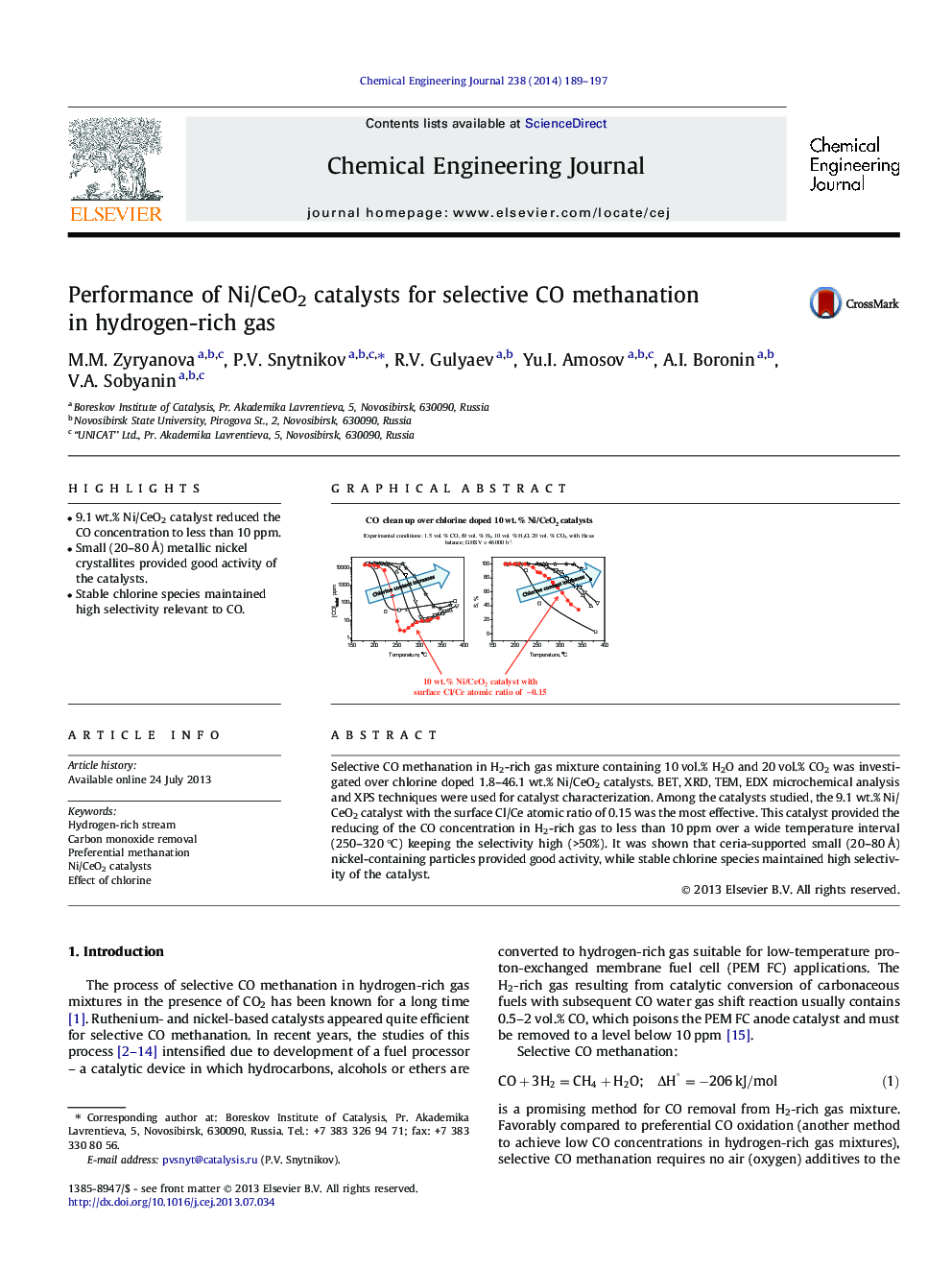| Article ID | Journal | Published Year | Pages | File Type |
|---|---|---|---|---|
| 148052 | Chemical Engineering Journal | 2014 | 9 Pages |
•9.1 wt.% Ni/CeO2 catalyst reduced the CO concentration to less than 10 ppm.•Small (20–80 Å) metallic nickel crystallites provided good activity of the catalysts.•Stable chlorine species maintained high selectivity relevant to CO.
Selective CO methanation in H2-rich gas mixture containing 10 vol.% H2O and 20 vol.% CO2 was investigated over chlorine doped 1.8–46.1 wt.% Ni/CeO2 catalysts. BET, XRD, TEM, EDX microchemical analysis and XPS techniques were used for catalyst characterization. Among the catalysts studied, the 9.1 wt.% Ni/CeO2 catalyst with the surface Cl/Ce atomic ratio of 0.15 was the most effective. This catalyst provided the reducing of the CO concentration in H2-rich gas to less than 10 ppm over a wide temperature interval (250–320 °C) keeping the selectivity high (>50%). It was shown that ceria-supported small (20–80 Å) nickel-containing particles provided good activity, while stable chlorine species maintained high selectivity of the catalyst.
Graphical abstractFigure optionsDownload full-size imageDownload as PowerPoint slide
